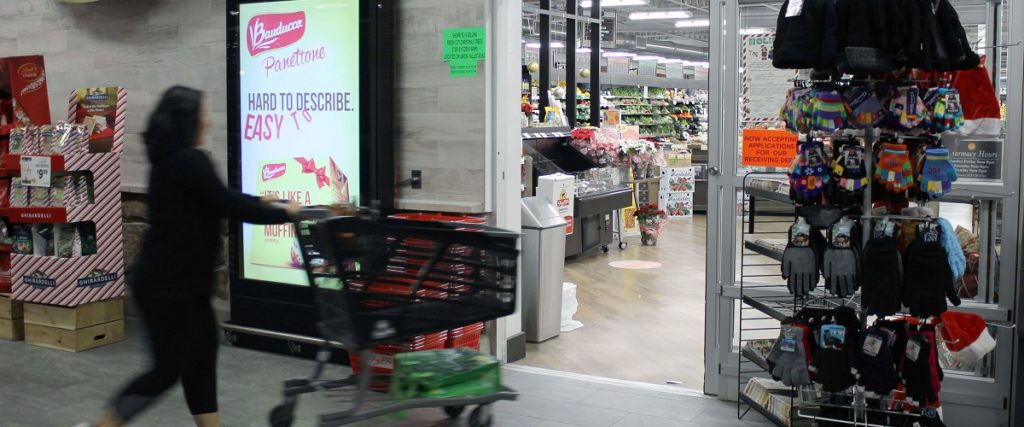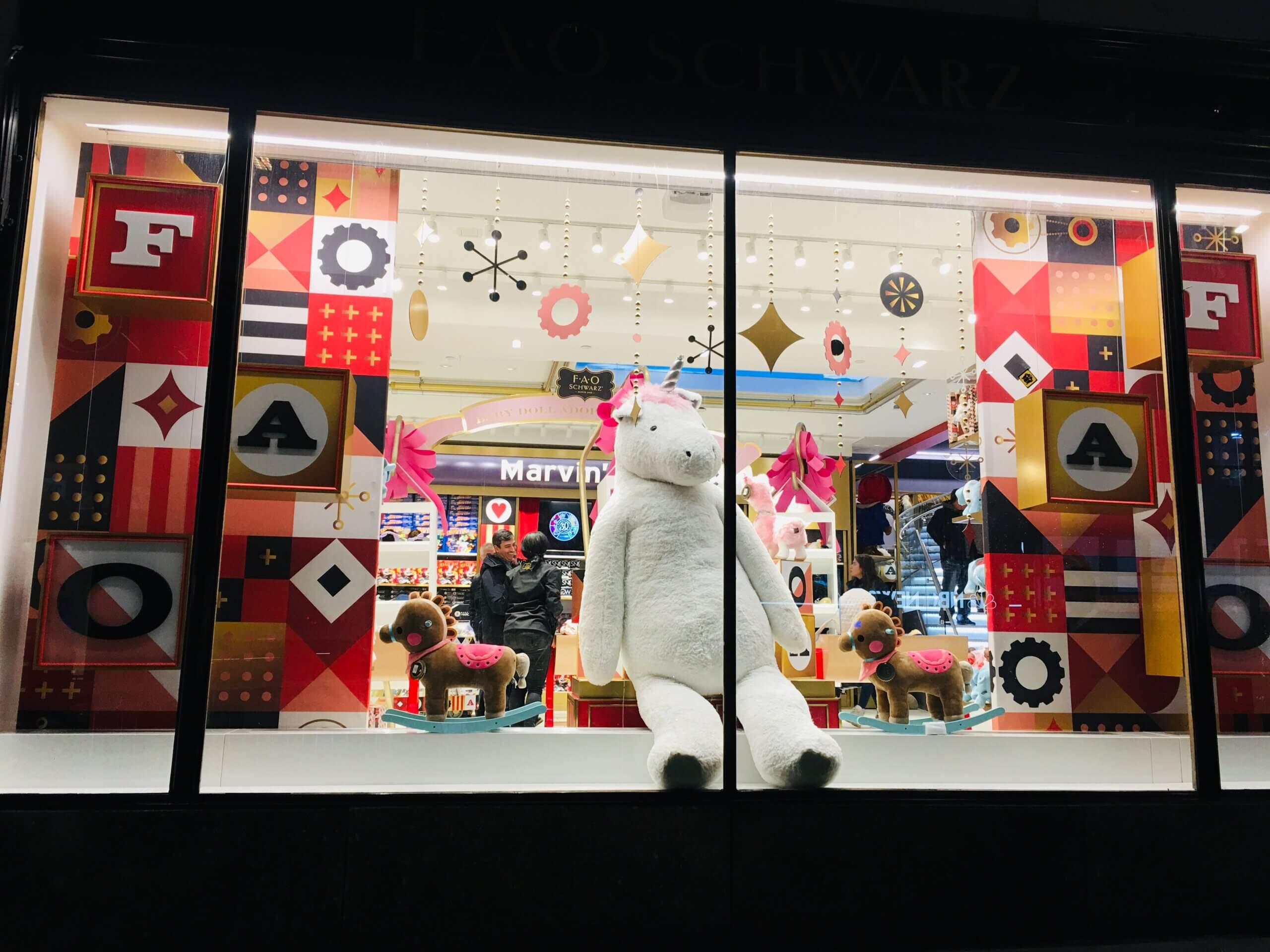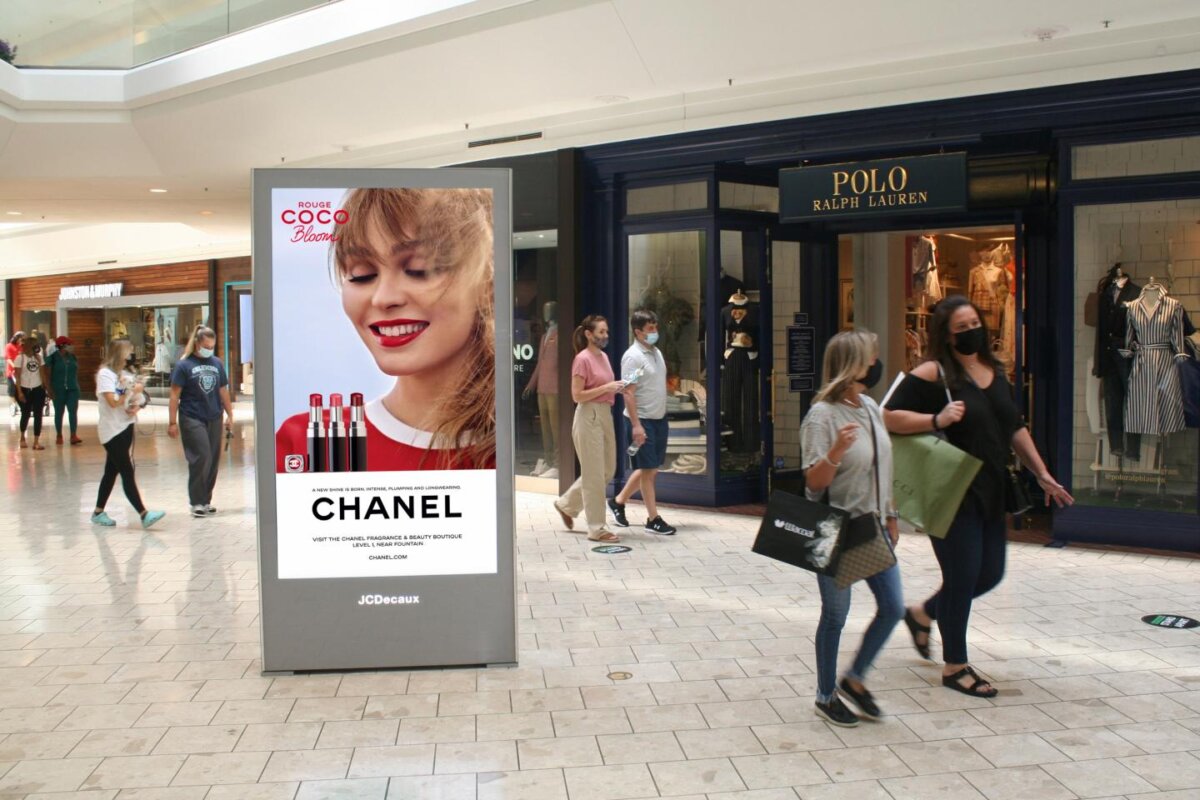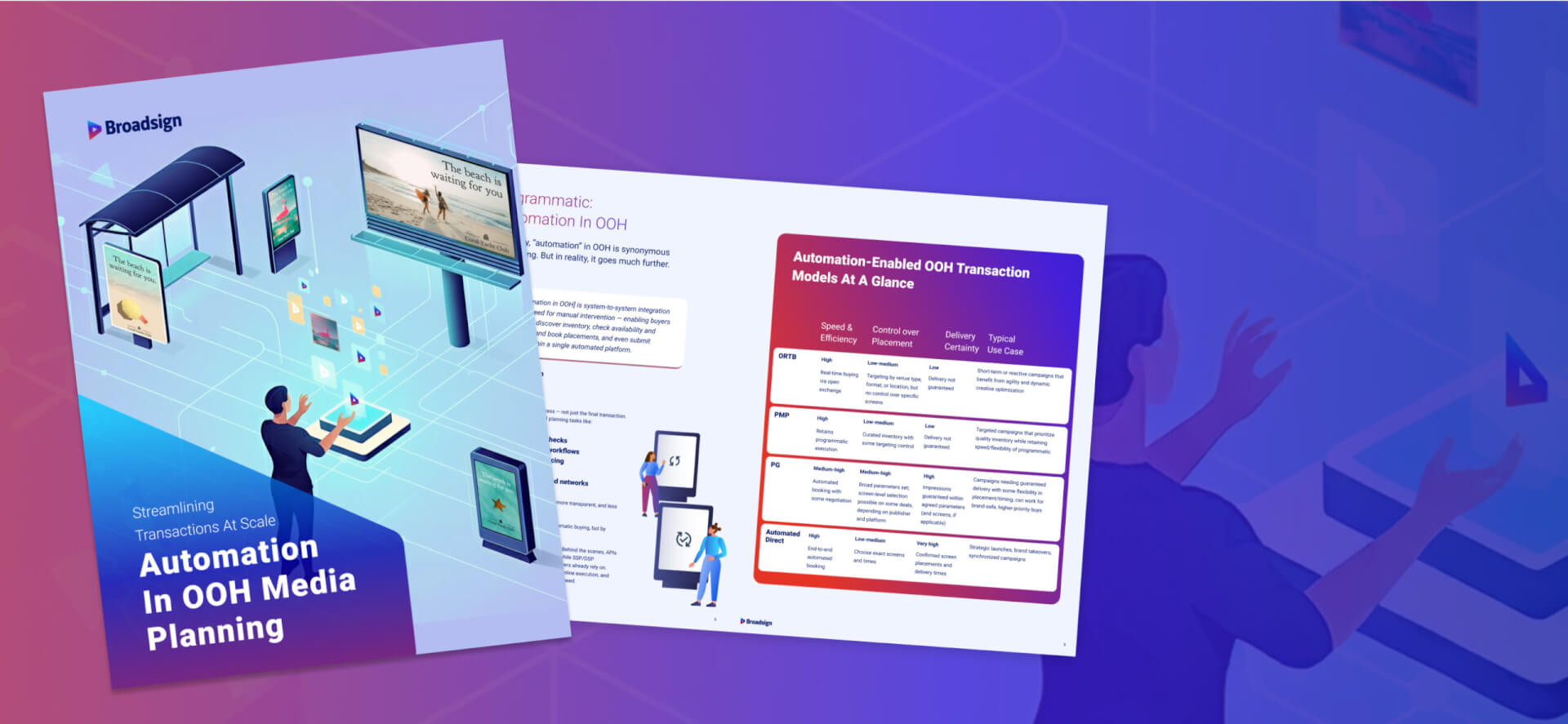| October 11, 2021
How Starlite Media elevates the shopping centre experience with DOOH
Across America, shopping centres anchored by grocery stores, big box stores, pharmacies, and other businesses draw tens of millions of consumers each day. These consumers are a group prepared to transact on location, but who are likely also growing accustomed to information-rich shopping experiences in the online space.
For brick and mortar stores, one of the keys to maintaining or establishing strong connections with this audience is to meet, in real time, its demand for information on available products and services. With its growing network of intelligent digital out-of-home screens placed at and around shopping centres, Starlite Media believes it has found a solution that will do just that.
Toward a digital future
Since starting out in the out-of-home space in 2003, Starlite has built up a strong stable of static inventory and locations at outdoor shopping centres. Around 2014, however, the company began to focus on the future of digital and the opportunities that could come from replacing static inventory with dynamic, intelligent tools for communicating with audiences. Beginning in 2019, Starlite began replacing signs in its most prominent locations with digital screens.
A test conducted with the help of Nielsen has shown this migration to digital to be an excellent choice. In mid-2019, Starlite placed digital and static advertising for a national cereal brand in Starlite’s locations, comparing resulting sales lift between the formats. Where static achieved a solid 8% lift, digital’s lift reached even higher, to 14.5%. According to Nielsen, both outperformed in-store, TV, radio, and online advertising.
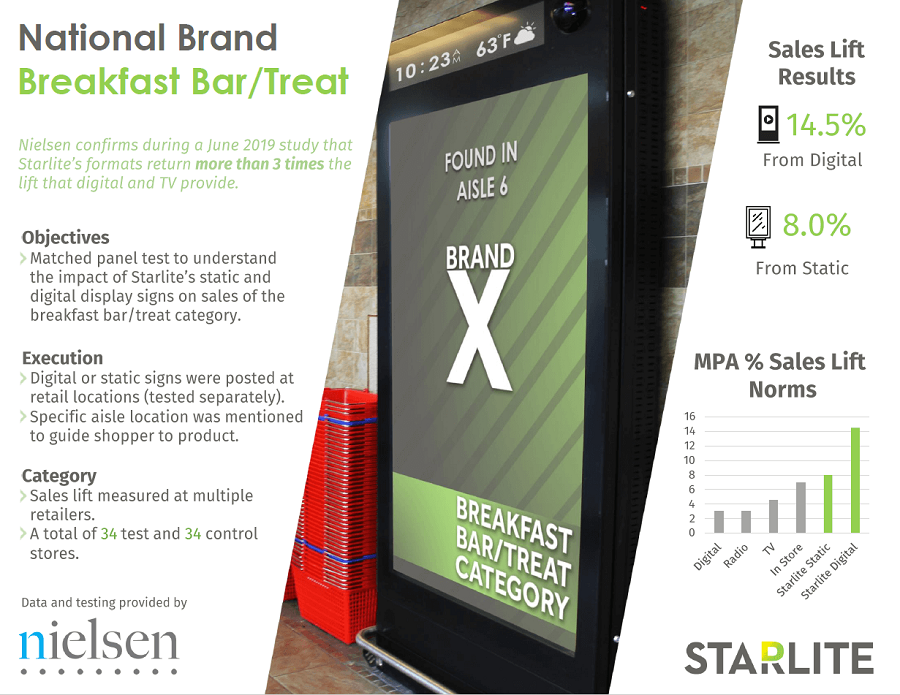
With an expected count of 500 screens deployed in New York and other critical markets within the next 12 months, and several thousand more on the way within the next couple of years, the company is eager to build on its early success in digital and deliver new opportunities to retailers at its locations.
There where people transact
Every one of Starlite’s screens is at a shopping centre that includes a grocery store, as well as pharmacies, restaurants, and other sorts of retail establishments. With Starlite’s screens given prominent placement at these shopping centres, it offers media buyers an enhanced ability to connect with shoppers right before they go to make a purchase. The screens are a great way to deliver valuable information about products and services through a compelling medium, making it easier to raise awareness and even fuel impulse purchases.
Better still, with the vast majority of shoppers heading directly home after going to the grocery store, memorable advertising on Starlite’s displays can lead to a quick turnaround for at-home searches, or even online transactions. Brands around the world are seeking out multichannel marketing opportunities that incorporate both DOOH and mobile or online advertising, and Starlite’s unique market means it is in a good position to benefit.
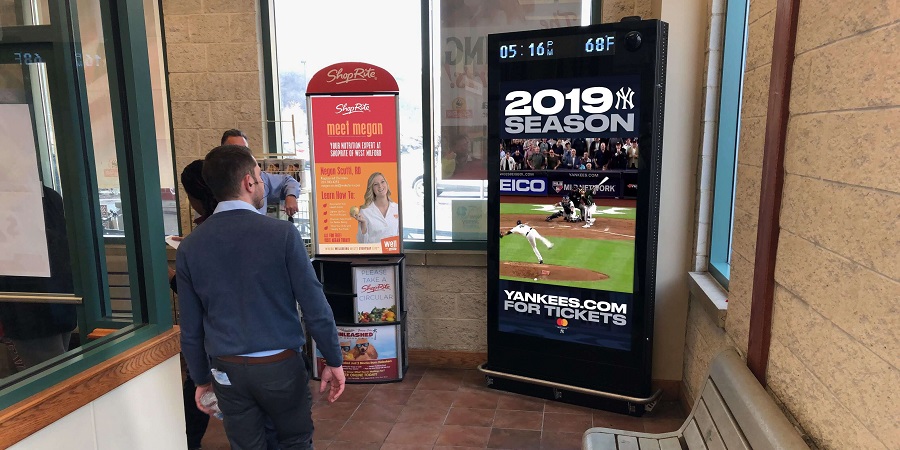
The sights and sounds of DOOH success
With its move into digital, Starlite is hard at work ensuring its network delivers on all the features advertisers want. The company’s screens all offer full-motion video, some up to 4k, and audio playback capability. It’s a feature set that holds a great deal of appeal for advertisers of all kinds, but the company also foresees the entertainment industry, and particularly companies in the film space, being particularly drawn to the multimedia potential of these screens for trailers and other ads that incorporate sound.
For all the benefits of that sort of flashiness, it’s the potential beyond the display that Starlite finds the most exciting about the DOOH space. Audience analytics features and detailed campaign reporting are must-haves for the national and global brands that typically advertise on the company’s displays. By ensuring its data are accurate and third-party verified, the company is seizing its opportunity to provide the data-driven insights that advertisers crave, and to build a sterling reputation within the industry.
Given time, they believe that this approach will help win them and other forward-thinking DOOH networks a large slice of the ad budgets commonly devoted to online advertising today.
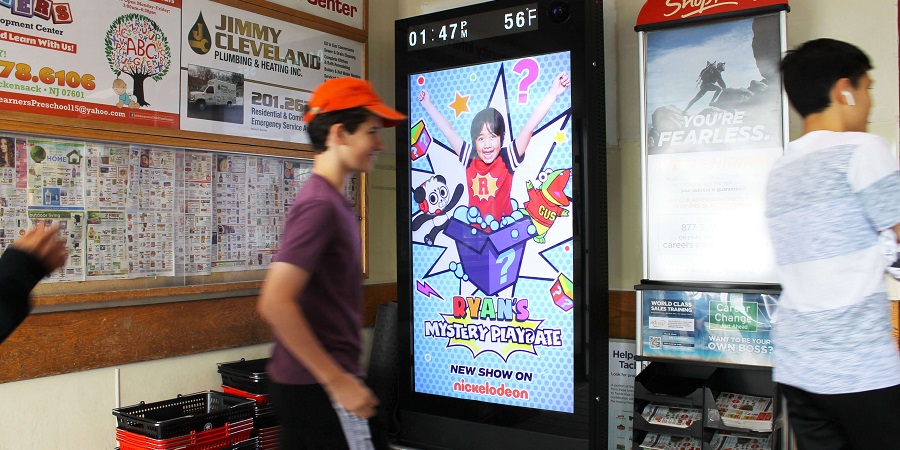
Starlite and Broadsign
Wanting to ensure its entry to the DOOH space was done correctly, the company spent years evaluating software options before settling on adopting the complete Broadsign platform. This includes Broadsign Control for content management, Broadsign Direct to manage sales and inventory, Broadsign Reach to enable programmatic transactions, Broadsign Publish to enable local content management and Broadsign Control Live for instant control over network health and playback.
By adopting this suite, Starlite is enabling putting in place all the pieces it needs for a successful, aggressive DOOH expansion. Critically, intelligent playback will help ensure the right content is played on the right screens at the right times, while integrated sales and inventory through Broadsign Direct drastically reduce time spent on RFPs and inventory management. The company will also be able to attract new buyers and different kinds of campaigns by enabling data-driven, programmatic transactions through Broadsign Reach.
Finally, Broadsign’s compatibility with a wide array of services, like the Quividi audience analytics platform, ensures Starlite can bake all the intelligence and features they want into their network. As the company’s network grows, it will be empowered to maintain the high levels of efficiency and quality that will set it apart.
